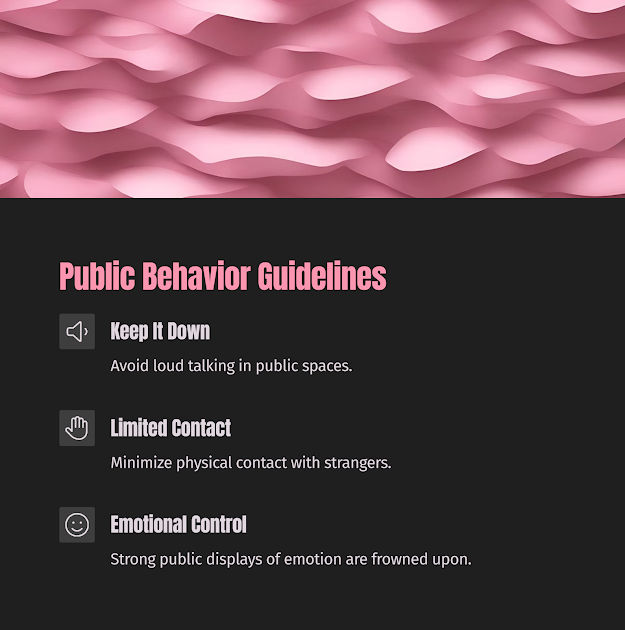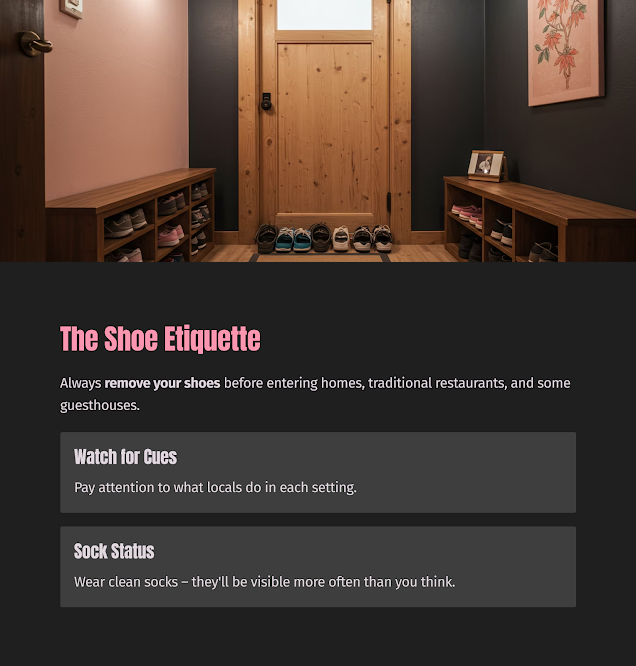Understand the unspoken rules of Korean culture to make a respectful and confident impression
What Every Visitor Should Know Before Traveling to Korea
Korea is a country rich in tradition, hierarchy, and respect-based culture.
Whether you’re traveling for tourism, business, or study, knowing the basic etiquette rules can greatly improve your interactions with locals.
In this post, we highlight the most important cultural “do’s and don’ts” for anyone visiting Korea, to help you avoid awkward moments and show genuine respect.
Greeting Etiquette – A Bow Speaks Louder Than a Handshake
When meeting someone for the first time, especially elders, a slight bow is essential.
Shaking hands is becoming more common but usually follows the bow.
Use two hands or support your right arm with your left hand when offering a handshake.
This shows politeness and humility.
Important: Don’t hug unless you have a very close personal relationship.
Respecting Elders – Age Really Matters in Korea
Age plays a major role in Korean social interactions.
It’s common to ask someone’s age early in a conversation.
Always show extra courtesy to older people, such as letting them sit first, speak first, or eat first.
Using honorifics in language is also key, though that’s more relevant if you speak Korean.
Key point: Never pour your own drink in front of elders – let someone else pour for you.
Dining Manners – Meals Are a Cultural Event
Korean meals follow a certain ritual that’s important to observe.
Wait for the oldest person to start eating before you begin.
Don’t stick chopsticks upright in a bowl of rice – this resembles a funeral rite.
When drinking alcohol, turn your head away slightly from elders and cover your mouth.
Table tip: Always use both hands when passing or receiving dishes and drinks.
| Behavior | Proper Etiquette |
|---|---|
| Start Eating | Wait for the eldest to begin |
| Serving Drinks | Use both hands, pour for others |
| Chopstick Placement | Lay across bowl, not standing up |
Public Behavior – Be Quiet, Polite, and Aware
Koreans value calm and respectful public behavior.
Speaking loudly in public, making excessive physical contact, or showing strong emotions is frowned upon.
Also, avoid blowing your nose at the table or in public places.
Cultural insight: Modesty is admired, so don’t brag or overshare.
Shoe Etiquette – Know When to Take Them Off
You’ll often be expected to remove your shoes before entering homes, traditional restaurants, and some guesthouses.
Wearing indoor slippers may be provided, and going barefoot is not considered rude.
Pay attention to what locals do, especially in private or traditional spaces.
Reminder: Keep socks clean – they matter more than you think.
Gift Giving – Thoughtfulness Over Price
If invited to someone’s home, bring a small gift like fruit, cookies, or tea.
Gifts are usually not opened in front of the giver, as modesty is emphasized.
When giving or receiving anything, especially a gift or business card, always use two hands.
Avoid: Sharp objects, green ink, and sets of four – all are culturally negative symbols.
| Item Type | Cultural Meaning | Recommendation |
|---|---|---|
| Food/Tea | Hospitality and warmth | Recommended |
| Green Ink Pen | Symbol of bad luck | Avoid |
| Number 4 Items | Death-related symbolism | Avoid |
Subway & Public Transport – Efficiency and Courtesy Rule
Korea’s transit system is one of the best, and so is commuter etiquette.
Priority seats are strictly for the elderly, disabled, or pregnant.
Silence is expected – take phone calls quietly or not at all.
If you’re carrying a backpack, hold it in your hand to avoid bumping others.
Golden rule: Respect personal space at all times.
Photo-Taking Etiquette – Ask First, Especially with People
Koreans enjoy taking photos but always ask before photographing someone, especially in private or traditional settings.
This includes markets, temples, and older locals.
If taking photos with someone, a quick “Can I?” gesture goes a long way.
Caution: Don’t take photos in government buildings or military zones.
Language Etiquette – Even Basic Korean Wins Hearts
Learning just a few Korean phrases shows deep respect.
Common greetings like “안녕하세요” (Hello), “감사합니다” (Thank you), and “죄송합니다” (I’m sorry) go a long way.
Don’t worry about perfect grammar – effort is what matters.
Final tip: A smile and a slight bow can bridge most gaps.











